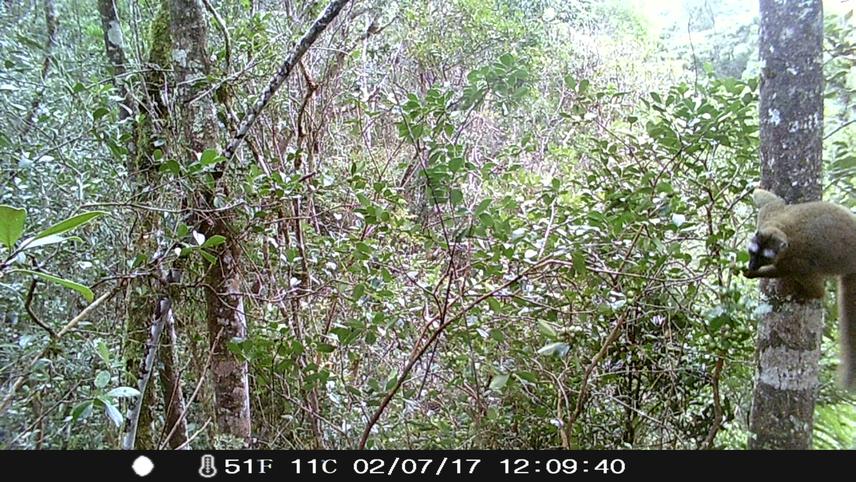Onja Harinala Razafindratsima
Other projects
4 May 2012
Effects of Habitat Disturbance and Edge on Diversity, Evolutionary Patterns and Dispersal Syndromes
28 Jun 2017
A Multidimensional Evaluation of the Conservation Implications of the Invasive Strawberry Guava in Madagascar
The project aims in understanding the relationship between three threatened lemur species and their environment, and their influence on forest community structure.

A lemur consuming guava seeds, caught on camera traps
In the face of increasing habitat loss, species extinctions, and the need for reforestation of degraded habitats, there is a need for deeper understanding of the role of primates as seed dispersers. Understanding their contribution to ecosystem function in a more quantitative and spatially explicit way will help us better understand their role in the regeneration and restoration of forests and the potential consequences for their loss. Such research objectives have taken on urgency as a result of the recent decline of frugivorous primate populations throughout the tropics where a majority of tropical trees require seed dispersal by vertebrate frugivores. The frugivorous bird diversity in Madagascar is very low and thus lemurs may play a keystone role as seed disperser for a large proportion of trees in the forest. Lemurs are exposed not only to habitat loss but also to hunting and effects of changing climate. Intact primary forest may suffer from the loss of lemurs through hunting because it may alter the process of maintenance and long-term sustainability of forest ecosystems, because they play a role in maintaining this ecosystem. Along with empirical data from field observations and experiments, I will develop computer models to predict trends in plant population dynamics and distribution by incorporating lemur traits and behavior.
This study is expected to be useful for the conservation and restoration efforts of the corridor habitats and degraded habitats in and surrounding Ranomafana National Park. This will show quantitatively how lemurs affect the distribution of plants and the structure of forest, and if different species may have strong mutualistic links with a different subset of the plant community and will give us more insight into how decline in both numbers and diversity is likely to have a negative effect on the diversity of forest habitat, which is important not only for these flagship species but also for numerous plants and animals that rely on the forest for their existence.
The spatially explicit models and demographic models that I will create from the data I collect on plant recruitment will be used to predict what happens when certain lemur species decline in numbers from the forest and the fruit trees lose their mutualistic partners. They can also be used to determine which species are likely to be most important for forest regeneration and restoration of degraded habitat which will be informative to management and restoration efforts in the area.